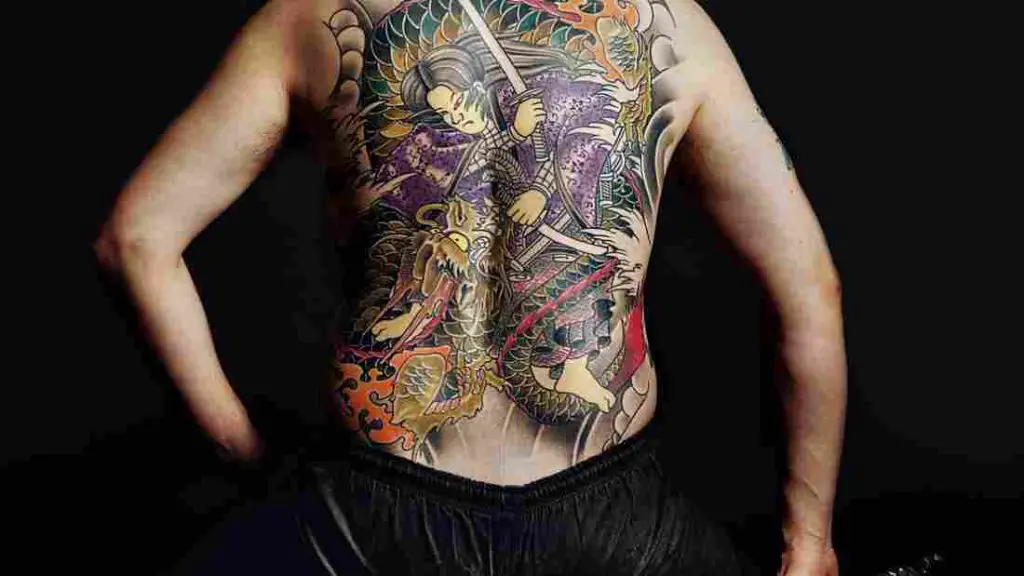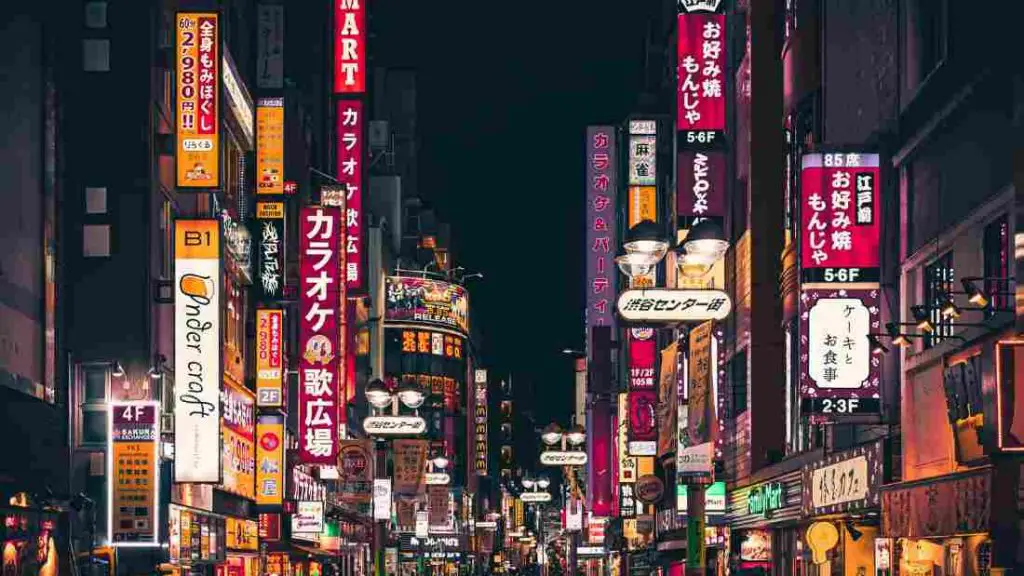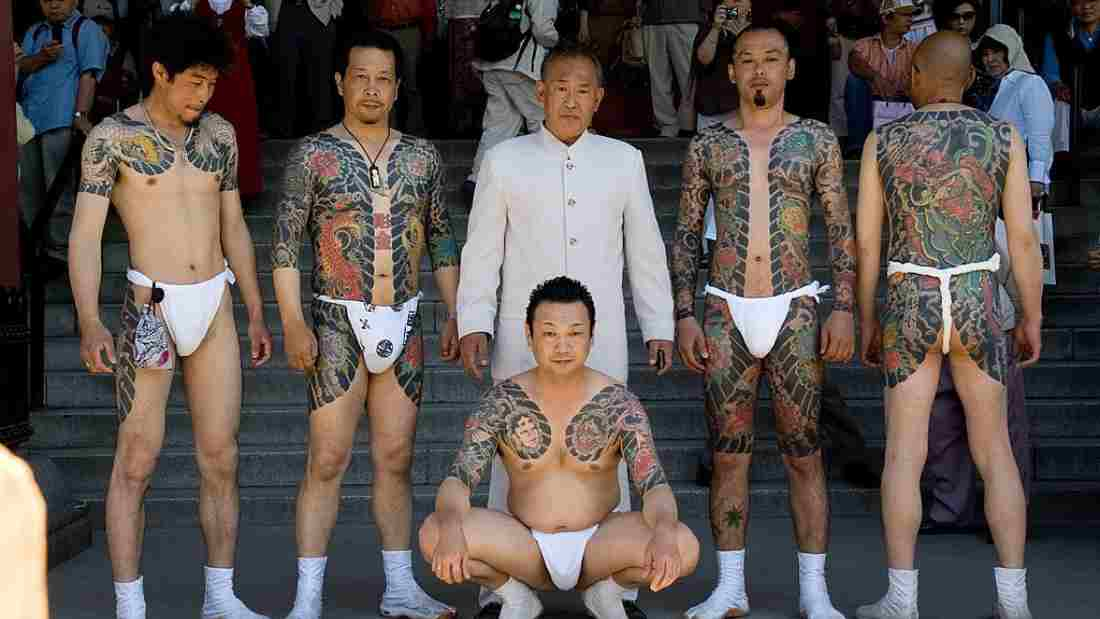Japan is known for its rich culture, stunning landscapes, and technological advancements. However, beneath the surface lies a dark underworld that has been thriving for centuries – The Yakuza.
This notorious organized crime syndicate has a long and complicated history in Japan, with its roots dating back to the 17th century. Despite being illegal, the Yakuza remains a powerful force in Japanese society today, involved in everything from drug trafficking to money laundering.
In this post, we will explore the history of the Yakuza and their impact on modern-day Japan.
The History of the Yakuza
The yakuza trace their origins back to two separate groups in feudal Japan: tekiya and bakuto. Tekiya were peddlers who travelled from village to village, selling their wares while living on the outskirts of society. Bakuto were gamblers and often associated with sumo wrestlers (who were also considered outcasts). These two groups eventually coalesced into what we now know as the yakuza.
The Meiji Period saw a sharp increase in tekiya activity, which led to a crackdown by the government. Many tekiya members were arrested and jailed, which caused the Yakuza to split into two groups: those who supported obeying the law (ninkyo) and those who believed that violence was necessary to get ahead (violent criminals). This split has persisted throughout Yakuza history.
World War II
During World War II, the Yakuza played a significant role in Japan’s economy and war effort. They engaged in various activities such as smuggling rationed goods, running black markets, and providing protection for businesses.
As the war progressed and resources became scarce, the Yakuza stepped in to fill the void. They smuggled goods like food, gasoline, and medicine that were rationed by the government to sell on the black market at inflated prices. This allowed them to make huge profits while also providing much-needed supplies to people who couldn’t get them through official channels.
In addition to these activities, the Yakuza also provided protection for businesses during this time. Many businesses were forced to pay protection money to Yakuza groups in order to avoid being vandalized or burned down by anti-war factions. The Yakuza would also act as intermediaries between businesses and the government, using their connections to help companies secure contracts or avoid taxes.
While their activities during World War II may have helped some Japanese citizens survive difficult times, they also contributed to a culture of corruption and illegal activity that persists in Japan today.
Furthermore, some Yakuza groups reportedly collaborated with the government during this time, engaging in espionage and assassination missions against foreign targets.
Overall, World War II was a pivotal moment in the history of the Yakuza. It solidified their position as a powerful force within Japanese society while also highlighting their willingness to engage in illegal activities for profit and power.
After the war, the Yakuza expanded into legitimate businesses such as real estate and construction. However, they still retained their connections to illegal activities such as gambling, drugs, and prostitution.
Yakuza Structure
The Yakuza is structured and organized in a hierarchical manner, with each member having a specific rank and role within the organization.
At the top of the hierarchy is the “oyabun,” or boss, who holds ultimate power and authority over the group. The oyabun has several underlings known as “wakagashira” who act as his advisors and help him make decisions. Below them are the “shatei,” or regular members, who carry out the day-to-day activities of the group.
Within each level of membership, there are further subdivisions based on seniority and experience. Members are expected to follow a strict code of conduct known as “ninkyo,” which emphasizes loyalty, respect, and honor. Breaking this code can result in severe punishment, including expulsion from the group or even death.
In addition to their internal structure, the Yakuza also maintains relationships with other criminal organizations both in Japan and abroad. These alliances allow them to expand their reach and influence while also providing access to resources like drugs or weapons.
Overall, the Yakuza’s structure and organization contribute to its reputation as a powerful and secretive criminal organization with deep roots in Japanese society. Despite efforts by law enforcement agencies to crack down on them, they continue to operate today using these same structures and practices.
The Yakuza Initiation Process
The Yakuza initiation process, also known as “sakazuki,” is a formal ceremony that marks a person’s entrance into the organization. It involves several rituals and tests designed to weed out those who are not committed to the Yakuza’s values and way of life.
The first step in the initiation process is to find a sponsor, or “aniki,” who will vouch for the candidate and introduce them to the group. The candidate must then undergo a series of interviews with senior members to assess their character, skills, and loyalty.
If they pass these initial tests, the candidate must perform a ritual known as “yubitsume,” which involves cutting off part of their little finger as a sign of loyalty and commitment to the group. This act signifies that they are willing to sacrifice themselves for the sake of the Yakuza.
After this, the candidate must swear an oath of allegiance to their oyabun and agree to follow all Yakuza rules and codes of conduct. They are given a new name or nickname that they will use within the organization, marking their transition from outsider to insider.
Finally, the candidate participates in a drinking ceremony called “sakazuki,” where they drink sake from a ceremonial cup while surrounded by other members. This symbolizes their acceptance into the group and marks the beginning of their new life as a member of the Yakuza.
The Yakuza initiation process is designed to test candidates’ loyalty, courage, and willingness to sacrifice for the group. It is seen as a crucial step in building trust and camaraderie within the organization while also weeding out potential informants or traitors.
Yakuza Tattoos
Yakuza tattoos, also known as “irezumi,” are not only a symbol of power and status within the gang but they also serve as a form of identity for Yakuza members. The tattoos are often large and cover much of the body, with intricate designs that can take years to complete. The process of getting a tattoo is painful and time-consuming, adding to its significance within the group.

Yakuza tattoos typically include traditional Japanese motifs such as dragons, cherry blossoms, koi fish, and samurai warriors. These images have deep cultural and historical roots in Japan and represent important themes like strength, courage, loyalty, and honour – all values that are highly prized within the Yakuza.
Each tattoo has a specific meaning or significance that reflects the wearer’s position within the organization or their personal history. For example, a dragon tattoo might signify leadership or strength while a cherry blossom tattoo could represent beauty or renewal.
However, Yakuza tattoos are not just symbols of power and status – they also serve to intimidate their enemies. With their large size and intricate designs, these tattoos strike fear into the hearts of those who oppose the gang. This is especially true in Japan where tattoos have long been associated with criminal activity.
Despite this association with criminality, Yakuza tattoos have become increasingly popular in mainstream culture both in Japan and abroad. Many people admire the artistry and craftsmanship that goes into creating these elaborate designs while others are drawn to their rebellious nature.
Famous Members of the Yakuza
The following are just a few examples of some of the most well-known members of the Yakuza throughout history. While many have passed away or been imprisoned, their legacies continue to shape this secretive criminal organization today.
Kazuo Taoka
Kazuo Taoka was a legendary figure in the world of the Yakuza. Born in 1913 in Hyogo Prefecture, Japan, Taoka became involved with the Yamaguchi-gumi at a young age and quickly rose through the ranks. He was known for his imposing physical presence – standing at over six feet tall and weighing over 200 pounds – as well as his aggressive personality. His nickname, “The Bear,” reflected both his build and his temperament.
Despite his reputation for violence, Taoka was also known for his business acumen and his ability to resolve conflicts through negotiation rather than bloodshed. He recognized that in order for the Yamaguchi-gumi to thrive, it needed to adapt to changing times and find new sources of revenue beyond traditional criminal activities like extortion and gambling.
Under Taoka’s leadership, the Yamaguchi-gumi expanded its operations into legitimate businesses like construction, real estate, and finance. This diversification helped insulate the organization from law enforcement crackdowns and allowed it to become one of the most powerful criminal syndicates in Japan.
Taoka’s leadership style was also marked by a strict code of honour and loyalty among members. Those who betrayed the organization or failed to live up to its standards were dealt with harshly.
Taoka’s life came to an abrupt end when he died of liver cancer in 1981 at the age of 68. His passing was mourned by many within the organization who saw him as a larger-than-life figure and one of the most influential figures in Yakuza history.
Susumu Ishii
Susumu Ishii was a prominent figure in the Japanese underworld, and was known as “The Dragon” due to his fierce reputation. He joined the Inagawa-kai syndicate in the 1940s and quickly rose through the ranks to became one of its top leaders.
Ishii was known for his flamboyant lifestyle and love of luxury cars and expensive clothes. He was often seen driving around Tokyo in his custom-made Rolls Royce or sporting specially tailored designer suits. His extravagant tastes earned him a reputation as one of the most stylish and flashy Yakuza bosses of his time.
But Ishii’s success wasn’t just due to his fashion sense – he was also an accomplished businessman who ran a successful construction company. He used his connections within the Inagawa-kai to secure lucrative contracts for his firm, which helped him amass a significant fortune over the years.
Despite his wealth and power, Ishii wasn’t immune to law enforcement scrutiny. He was arrested multiple times throughout his career, including on charges of fraud and tax evasion. But he always managed to evade serious punishment thanks to his connections within the Yakuza and Japanese society at large.
Ishii’s reign as godfather of the Inagawa-kai came to an end when he died of natural causes in 1991 at the age of 67. Today, he is remembered as one of the most colorful characters in Yakuza history – a man who embodied both the glamour and danger of Japan’s criminal underworld.
Goto Tadamasa
Tadamasa Goto was a prominent figure in the Yamaguchi-gumi syndicate, and is considered one of the most notorious and controversial Yakuza bosses of all time. Born in 1942 in Tokyo, Japan, Goto began his criminal career at a young age and quickly rose through the ranks of the Yamaguchi-gumi.
Goto’s leadership style was marked by his brutal tactics and willingness to use violence to achieve his goals. He was known for his ruthless reputation and was feared by many within the organization.
However, despite his success as a Yakuza boss, Goto’s life took a dramatic turn when he became an informant for the FBI in the late 1990s. In exchange for immunity from prosecution, Goto provided information that helped bring down several high-ranking members of the Yamaguchi-gumi and other Japanese organized crime syndicates.
Goto’s decision to become an informant sparked controversy within both law enforcement circles and the Yakuza community. Some saw him as a traitor who had betrayed his fellow gang members, while others praised him for helping to dismantle Japan’s criminal underworld.
After serving as an informant for several years, Goto relocated to Los Angeles in 2008 under a new identity with help from U.S. government officials. He renounced his ties to the Yakuza and reportedly began working as a consultant for security firms.
Despite his controversial legacy, Goto remains one of the most fascinating figures in Yakuza history – a man who rose to power through violence but ultimately chose to betray his own kind in pursuit of personal gain.

Shinobu Tsukasa
Shinobu Tsukasa, also known as Kenichi Shinoda, is a legendary figure in the world of Yakuza. He is the current leader of the Yamaguchi-gumi syndicate.
Tsukasa was born in 1944 in Hiroshima Prefecture and joined the Yamaguchi-gumi at a young age. He became its sixth kumicho, or godfather, in 1985.
Under Tsukasa’s leadership, the Yamaguchi-gumi expanded its operations both within Japan and abroad. The syndicate reportedly has over 30,000 members today and controls a wide range of illegal activities such as drug trafficking, extortion, and prostitution.
Despite his high profile within the Yakuza community, Tsukasa has managed to avoid serious legal trouble throughout his career. He has been arrested several times on minor charges such as illegal firearms possession but has never been convicted of any major crimes.
However, Tsukasa’s leadership style has not been without controversy. He is known for his strict code of conduct and harsh punishments for those who break it. This includes cutting off fingers or even yubitsume – self-amputation of part of a finger – for those who fail to follow orders or show disrespect to their superiors.
Despite these practices being considered barbaric by many outside the Yakuza community, they are seen as part of a long-standing tradition within Japanese organized crime that emphasizes loyalty and honour above all else.
In recent years, there have been reports that Tsukasa may be stepping down from his position as kumicho due to health issues. However, he remains an iconic figure within the Yakuza world – a man who embodies both the power and danger associated with Japan’s criminal underworld.
Kenichi Shinoda
Shinobu Tsukasa’s right-hand man, Kenichi Shinoda, is a prominent figure in the Yamaguchi-gumi syndicate and a feared member of the Yakuza. He has been referred to as “Shinobu Tsukasa’s Left Arm” due to his close relationship with the current kumicho.
Born in 1942 in Hiroshima Prefecture, Shinoda joined the Yamaguchi-gumi and has been involved in numerous criminal activities over the years, including drug trafficking, extortion, and money laundering.
Shinoda’s criminal career has not been without consequences – he has spent time in prison on multiple occasions. In 1997, he was arrested for tax evasion and served three years behind bars. He was released in 2000 but was arrested again just two years later for involvement in a shooting incident.
Despite his legal troubles, Shinoda remains an important figure within the Yamaguchi-gumi and is rumored to be next in line for leadership. He is known for his loyalty to Tsukasa and his willingness to use violence to protect the interests of the syndicate.
Satoru Nomura
Satoru Nomura is a prominent member of the Japanese Yakuza and is considered one of the most powerful underworld figures in the country. He is currently the leader of the Kudo-kai, a criminal organization based in Kitakyushu City in southwestern Japan.
Nomura was born in 1946 and joined the Kudo-kai, becoming its sixth kumicho, or godfather, in 1994.
Under Nomura’s leadership, the Kudo-kai expanded its operations both within Japan and abroad. The syndicate reportedly has over 4,000 members today and controls a wide range of illegal activities such as drug trafficking, extortion, and gambling.
Despite his high profile within the Yakuza community, Nomura has managed to avoid serious legal trouble throughout his career. He has been arrested several times on minor charges such as illegal firearms possession but has never been convicted of any major crimes.
The Modern-Day Yakuza
The Yakuza continues to be a prominent and influential presence in modern-day Japan. Despite increased efforts by law enforcement agencies to crack down on organized crime, the syndicates continue to operate both openly and covertly throughout the country.
One of the primary sources of income for the Yakuza is through illegal gambling operations. This includes everything from traditional Japanese games like pachinko to more modern forms of online betting. The Yakuza also controls many bars, nightclubs, and other entertainment venues where they can earn money through extortion, protection rackets, and money laundering.
Drug trafficking is another major source of income for the Yakuza. They are involved in importing and distributing drugs such as methamphetamine and marijuana throughout Japan. The syndicate also has a significant presence in the sex industry – operating brothels and exploiting women for profit.
The Yakuza is known for its close ties with Japanese politicians, business leaders, and other influential figures. This allows them to exert influence over various aspects of Japanese society – including real estate development, construction projects, and even professional sports teams.
In recent years, there have been efforts by the Japanese government to crack down on the Yakuza’s activities. This includes passing laws that make it illegal to do business with criminal organizations or provide them with financial support.
However, despite these efforts, the Yakuza remains a powerful force within Japanese society. Their influence extends far beyond their own criminal organizations – touching on all aspects of Japanese life from politics to entertainment. As long as they remain active, they will continue to pose a significant challenge to law enforcement officials seeking to maintain order and stability in Japan.
Impact on Japanese Society
The Yakuza has had a significant impact on Japanese society as a whole. Their activities have affected businesses, politics, and everyday life in Japan.
The Yakuza’s control over various industries such as construction, real estate, and entertainment has had a direct impact on businesses in Japan. Companies that refuse to cooperate with the syndicate risk being extorted or having their operations disrupted. This can lead to increased costs for businesses and even bankruptcy in some cases.

Politically, the Yakuza’s influence is also felt throughout Japan. They provide financial support to politicians and political parties in exchange for favours or protection. This has led to concerns about corruption and the erosion of democratic values in Japan.
In everyday life, the Yakuza’s presence can be seen through their involvement in illegal gambling and sex industries. These activities can lead to exploitation of vulnerable individuals and contribute to societal issues such as addiction and human trafficking.
Furthermore, the Yakuza’s strict code of conduct and violent punishments for those who break it can create an atmosphere of fear within Japanese society. This can make it difficult for individuals to speak out against criminal activity or seek help when victimized by the syndicate.
Conclusion
In conclusion, the Yakuza remains a powerful and influential presence in modern-day Japan. Despite efforts to crack down on organized crime, the syndicate continues to operate both openly and covertly throughout the country.
The Yakuza’s influence extends far beyond their own criminal organizations – touching on all aspects of Japanese life from politics to entertainment.
Despite efforts by law enforcement agencies to crack down on organized crime in Japan, the Yakuza continues to exert influence over many aspects of Japanese society. As long as they remain active, they will continue to pose a significant challenge to maintaining order and stability in Japan.
Disclosure: Please note that some of the links in this post are affiliate links. When you use one of my affiliate links, the company compensates me. At no additional cost to you, I’ll earn a commission, which helps me run this blog and keep my in-depth content free of charge for all my readers.



